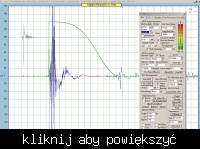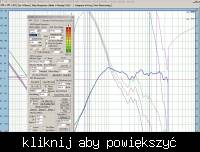Ok, to wracam do rozdzielczości pomiaru. Cytuje opis z manual do Soundeasy, rozdział 16-ty, część zatytułowana "True frequency resulution":
() The system transfer function is computed by applying an FFT to the impulse response or a portion of it as in the case of windowed, anechoic loudspeaker measurements. The displayed frequency resolution is given as the sample rate divided by the FFT size (i.e. 48000/262144=0.183Hz). Displayed frequency resolution is just the FFT bin separation. However, the true frequency resolution of a measurement is at best equal to 1/T where T is the length of the impulse response segment used in the FFT calculation (i.e. the width of a rectangular time window). Thus, it is possible to have a very fine displayed resolution but a rather coarse true resolution. For example, you could apply a 32768-point FFT to a 512-point segment of impulse response. In that case, the large FFT only acts to interpolate the true frequency resolution to form a much finer displayed resolution.
For example, if the time window T = 4 milliseconds the lowest accurate frequency is 250 Hz. The true frequency resolution at all higher frequencies will, in this case, also be 250 Hz. Therefore, the next correctly measured and calculated data point will be at 500Hz, and the next at 750Hz, and so on…..
Please note, that between 250Hz and 750Hz there is only ONE valid data point !.()".
Jak dla mnie te dwa akapity są kluczowe jeśli chodzi o rozdzielczość pomiaru i jednoznacznie wskazują na kluczową w pomiarach długość bramki.
Jeśli amplituda SPL jest interpolowana, to znaczy że faza też. Koło się zamyka...



